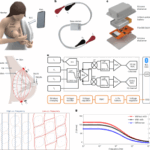2025-05-12 ワシントン大学セントルイス校(WashU)
<関連情報>
- https://source.washu.edu/2025/05/drug-to-slow-alzheimers-well-tolerated-outside-of-clinical-trial-setting/
- https://jamanetwork.com/journals/jamaneurology/fullarticle/2833457
記憶専門クリニックにおけるレカネマブ治療 Lecanemab Treatment in a Specialty Memory Clinic
Madeline Paczynski, PA, MCMSc; Anna Hofmann, MD; Zachary Posey, MA; et al
JAMA Neurology Published:May 12, 2025
DOI:0.1001/jamaneurol.2025.1232

Key Points
Question Is it feasible and safe to treat patients with early symptomatic Alzheimer disease with lecanemab in a specialty memory clinic setting?
Findings In this study, lecanemab treatment was initiated in 234 patients over 14 months; infusion-related reactions were common (37%) and typically mild. Amyloid-related imaging abnormalities were observed in 42 of 194 patients (22%) who received at least 4 lecanemab infusions and underwent at least 1 monitoring magnetic resonance imaging, including 11 (5.7%) with symptomatic amyloid-related imaging abnormalities and 2 (1.0%) with clinically severe amyloid-related imaging abnormalities.
Meaning In this study, treatment with lecanemab was feasible in a specialty memory clinic and the frequency of significant adverse events was manageable.
Abstract
Importance Two monoclonal antibodies targeting amyloid plaques, lecanemab and donanemab, have received traditional US Food and Drug Administration (FDA) approval for the treatment of early symptomatic Alzheimer disease (AD). The most significant adverse events associated with these therapies are infusion-related reactions and amyloid-related imaging abnormalities (ARIA) with edema/effusion (ARIA-E) and/or hemorrhage/hemosiderin deposition (ARIA-H). The feasibility and safety of providing these treatments in clinical practice is unclear.
Objective To examine the feasibility and safety of treating patients in specialty memory clinics with lecanemab.
Design, Setting, and Participants This retrospective analysis of consecutive patients in whom lecanemab was initiated between August 1, 2023, and October 1, 2024, at Washington University Memory Diagnostic Center, an outpatient specialty memory clinic. Lecanemab was initiated in 234 patients with early symptomatic AD. Eligibility was based on the FDA label and appropriate use recommendations with occasional exceptions.
Exposure Patients were treated with lecanemab, 10 mg/kg, intravenously every 2 weeks.
Main Outcomes and Measures Infusion-related reactions, ARIA, and withdrawal from treatment were assessed.
Results The 234 patients treated with lecanemab had a mean age of 74.4 (SD, 6.7) years, 117 were female (50%), and 117 were male. (50%) Infusion-related reactions occurred in 87 patients (37%) and were typically mild. Of the 194 patients at risk for ARIA during the study period, 44 had at least 1 microhemorrhage and/or superficial siderosis before initiation of lecanemab (23%). Over an average treatment period of 6.5 months, 42 total patients (22%) developed ARIA; 29 developed ARIA-E with or without ARIA-H (15%) and 13 developed isolated ARIA-H (6.7%). Eleven patients (5.7%) developed symptomatic ARIA, 2 of those patients (1.0%) with clinically severe symptoms. No patients developed a macrohemorrhage or died. Patients with mild dementia had a 27% rate of symptomatic ARIA; those with mild cognitive impairment or very mild dementia had a 1.8% rate. Overall, 23 of 234 patients (9.8%) withdrew from treatment for various reasons, 10 for ARIA (4.3%).
Conclusions and Relevance A single-specialty memory clinic initiated lecanemab treatment in 234 patients over 14 months. The frequency of significant adverse events, including ARIA, was manageable. These results may inform discussions about the risks of anti-amyloid treatments.


